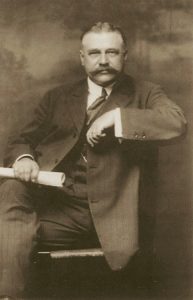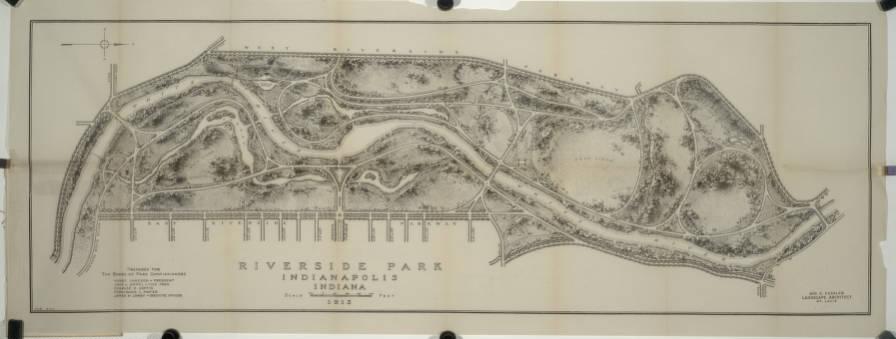
Photo info …
Credit: Public domain via Wikimedia CommonsView Source
(July 16, 1862 – Mar. 20, 1923). George Edward Kessler, who designed the Indianapolis park and boulevard system, was born in Frankenhausen, Germany, in 1862 and moved to the United States with his parents when he was three years old. He attended schools in New York and Dallas until 1878 when he returned to Europe to train at the Grand Ducal Gardens in Weimar. He then entered the Charlottenburg Polytechnicum and received special instruction in civil engineering at the University of Jena.
Kessler began his professional career in the U.S. in 1882 working on a pleasure resort near Kansas City, Missouri. In 1892, he designed Kansas City’s park and boulevard system and became the secretary and landscape architect of the city’s newly created park board. He retained his position as landscape architect until his death. In 1902, Kessler laid out the grounds for the Louisiana Purchase Exposition in St. Louis (1904). At that time, he established offices in St. Louis and moved to that city in 1910.

In 1908, the Indianapolis Board of Park Commissioners hired Kessler as landscape architect, a position he held until 1915. design for Indianapolis, presented in 1909, featured a “chain of parks brought to the doors of all sections of the community” linked by wide, sweeping boulevards. While under contract to the city, Kessler also redesigned the plan, adding the sunken gardens and new bridges, and designed scenic bridges at Brookside Park. In 1917, he planned the suburban enclave of , with its curvilinear streets, homes sited on wooded hills, and golf links.
Internationally known, Kessler also designed park systems, boulevards, and other improvements for cities such as Memphis, Cincinnati, Dallas, Houston, Salt Lake City, Denver, and Mexico City. Just before his death, he completed plans for the park and boulevard system in Terre Haute, Indiana, and an addition to the boulevard system in Indianapolis, which when completed in 1929 was named Kessler Boulevard. Although never a resident of Indianapolis, Kessler died in the city following surgery for kidney disease.
George Kessler’s legacy as a landscape architect and city planner remains visible both nationally and internationally. During his lifetime, he planned 230 projects, including Mexico and China as well as in 23 states and 100 cities throughout the United States. In the U.S. and Indianapolis, his portfolio of greenways, cemeteries, communities, park and boulevard systems, estates and residences, fairgrounds, parks, and schools has enhanced the way people experience the area where they live.

Help improve this entry
Contribute information, offer corrections, suggest images.
You can also recommend new entries related to this topic.

